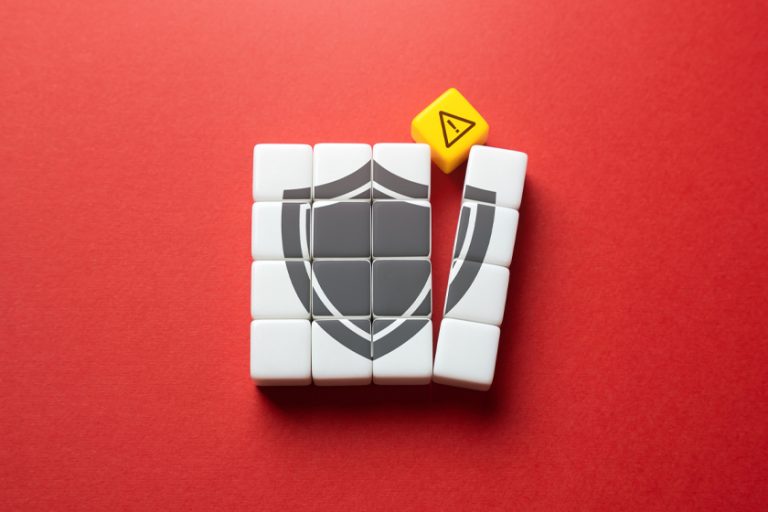

My experience in Revenue Cycle Management (RCM) spans both in-office and remote environments. During this time, I have had the privilege of growing myself and developing new RCM leaders. One of the key areas I have consistently addressed is the impact of multitasking on productivity. It is a challenge that can overwhelm both new and seasoned leaders.
As a mentor, I emphasize the power of focused work and escaping the “multitasking bubble.” The multi-tasking bubble is a mindset that creates an anomaly indicating to be efficient I must work on multiple tasks at the same time. I use my experience to guide new leaders in developing strategies for prioritizing tasks, managing interruptions, and achieving optimal results.
When I worked in an office and was in-person for meetings, I was forced to consciously avoid multi-tasking as it would be considered rude and unprofessional. Sitting across the table from another leader or peer was not conducive to reading a message on my phone or checking my email. However, when working remotely and finding myself in a more secluded environment temptation exists for me to multi-task.
Let us look at some of the tools that have worked for me to escape my multi-tasking bubble.
Warm-Up
Please read aloud the following exactly as written.
The the dog birds chased were the singing cat outside across my the window room. The the leaves lamp were fell blowing causing in both the animals breeze to very hide relaxing.
A little confusing, right? We will circle back to this example later in this article.
Multi-Tasking
In our working world, there is more technology than ever, and many of us work remotely for at least part of our work week – which has increased the pressure to multi-task to get things done. I feel pressured to multi-task to prepare for my next meeting or to simply get through tasks. With various interruptions – notification chimes, chats from team members, and my looming to-do list, I know I need to make a conscious effort to avoid distractions throughout my day. Perhaps you too have been caught multi-tasking during meetings and had to ask for a question or thought to be repeated – which can have a negative impact on meeting focus and cause a bit of embarrassment as it is revealed to the group your lack of attention.
When working independently, my undivided attention on the task allows for quicker completion. When I work collaboratively to develop processes or find the root cause of a situation, I owe it to others to be respectful and be a good steward of everyone’s time with uninterrupted focus. Having to repeat or revisit discussions because of lack of engagement is a common point of frustration for leaders.
Staying Focused and Productive
According to the Productivity Project (Bailey, 2016, https://chrisbailey.com/the-productivity-project/) there are three elements that comprise The Productivity Equation: Time + Energy + Attention = Productivity. Let us dig deeper into this equation.
Time: To successfully complete any task, time is needed. There are a set number of 24 hours in a day. The amount of time each of us have in a day is non-negotiable. Time is, therefore, a constant unchanging addend in the Productivity Equation. How each of us uses our time is an important part of the time we are allotted. I set boundaries for myself to maintain a decent work/life balance. Setting boundaries has allowed me to provide the attention needed during working hours and walk away each day knowing I have time to focus on my family and outside of work activities.
Energy: Energy is a part of the Productivity Equation that can diminish. The good news is energy is renewable. There are different ways that I have found helpful to replenish my energy, such as: eating healthy snacks or taking a 5-minute eyes closed break (make sure you set an alarm if you fall asleep quickly). In addition, I have embraced the need for a good night’s sleep each night. The difference 8 hours of sleep makes for me is indescribable.
Attention: Attention is needed to ensure tasks are completed timely and accurately. When interference diverts my attention, it is frustrating. I have given myself permission to reduce distractions throughout my day. Focusing 100% on an individual task gleans effectiveness and satisfaction. If needed, I simply step away, go for a walk, or take a moment to do some deep breathing to help me refocus to prevent subpar task completion. In addition, I use Focus Mode on my phone to put myself on Do Not Disturb to allow interruptions to cease.
Multi-Tasking Example
Let us revisit the Warm-Up activity. Read the following again exactly as it is written:
The the dog birds chased were the singing cat outside across my the window room. The the leaves lamp were fell blowing causing in both the animals breeze to very hide relaxing.
Please answer the following questions:
- What was the dog doing?
- What were the leaves doing?
- Is the cat singing?
What you read above was how your brain thinks when you are multi-tasking – combining multiple topics can result in a jumbled mess that takes mental effort to sort out.
Let us focus on each set of sentences separately.
- The dog chased the cat across the room. The lamp fell causing both animals to hide.
- The birds were singing outside my window. The leaves were blowing in the breeze; very relaxing.
Now answer the questions:
- What was the dog doing?
- What were the leaves doing?
- Is the cat singing?
Much more clarity, right? Remaining focused on independent items (in this example – independent sentences) opens your mind to clarity to ensure a full understanding of what is being shared.
Escaping the Multi-Tasking Bubble
The desire to multi-task is something I have wrestled throughout my career, and it is not an easy urge to ignore. I lead by example to ensure my team comprehends the importance of full focus, as well. I find value in purposeful discussions with my team on the importance of reducing distractions and blocking out unnecessary noise.
Time, Energy, and Attention are needed to be Productive. Escaping the Multi-Tasking Bubble can be challenging. The first step is understanding how multi-tasking can affect you by identifying what is distracting you. Is your phone buzzing? Are your new email pop-ups diverting your attention? The second step is to make minor adjustments and remove controllable distractions from your day. The following are my suggestions to assist you on this journey:
- Time – Cut down meeting times from 60 minutes to 45 minutes – This will allow you (and others) to use 15 minutes to clear out items that would distract them during the meeting; resulting in 45 minutes of uninterrupted meeting topic focus. My time management is important for me to maintain focus. Responding to text messages or chats during these 15-minutes is freeing for me and provides the opportunity for me to devote my full attention during the 45-minute meeting.
- Attention – Prioritize tasks – Keeping an ongoing fluid list of tasks and priorities is necessary to ensure you remain focused throughout your day. The dreaded To Do list that does not seem to stop growing is challenging for me. By keeping an ongoing prioritized list, I can ensure top priority tasks have my attention. When focus is needed on individual tasks, I put my phone on Do Not Disturb and mute my email notifications. This allows me to have uninterrupted attention to complete tasks without interruption.
- Energy – Block time on your calendar to re-energize. If I do not block my calendar, I skip re-energizing throughout the day. I have healthy snacks that I can grab to give my blood sugar a boost throughout the day.
- Time & Attention – Own your calendar – focus on individual tasks without interruptions; these tasks may include checking and responding to email or full focus on finalizing a presentation. I block my calendar a few times a week to ensure I devote the time and attention needed if I am over inundated with emails and/or have a specific project that needs to be completed. Another consideration I make is to analyze the need to be in attendance during a meeting. If I am multi-tasking during most of a meeting, is it necessary to attend?
- Attention – Mute your notifications – Use that “mute” button. This will keep distractions limited, allowing focus on the current task. I have mentioned this a few times; muting notifications helps me avoid unnecessary technology distractions.
- Attention – Turn your camera on during meetings – Being on camera can assist in preventing the urge to multi-task since others are watching (if you think others do not see you checking your cell phone, you are incorrect). To help myself focus, I have my camera on during most meetings. Seeing myself on camera reminds me where my attention needs to be.
I recognize complete removal of multi-tasking may not always be an option; however, being cognizant of the relevance of sole focus is necessary to instill a more effective habit. Making slight changes and moving toward the goal of reducing multi-tasking is a step in the right direction.
What are you committed to change to escape the Multi-Tasking Bubble?
Author: Jill Pirvu, Director Revenue Cycle Management, Healthrise



